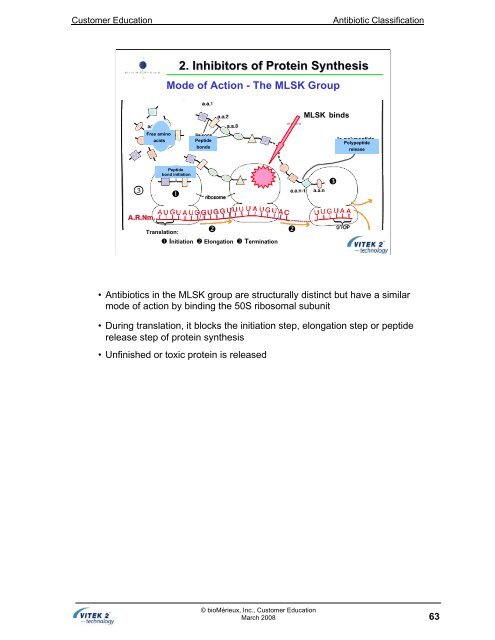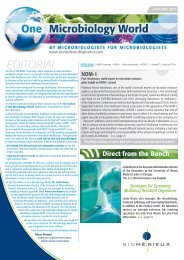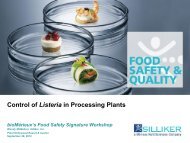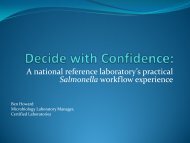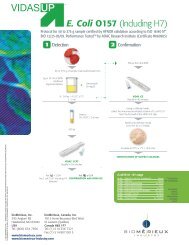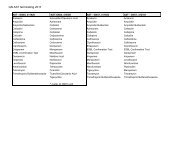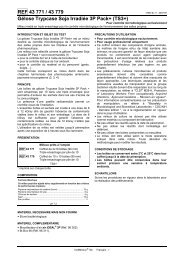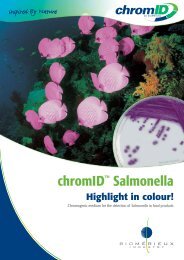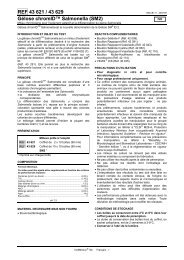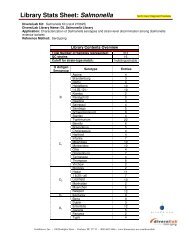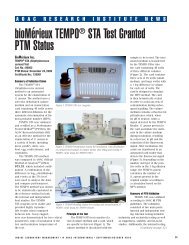Antibiotic Classification and Modes of Action - bioMerieux
Antibiotic Classification and Modes of Action - bioMerieux
Antibiotic Classification and Modes of Action - bioMerieux
You also want an ePaper? Increase the reach of your titles
YUMPU automatically turns print PDFs into web optimized ePapers that Google loves.
Customer Education <strong>Antibiotic</strong> <strong>Classification</strong><br />
Free amino<br />
acids<br />
Peptide<br />
bond initiation<br />
�<br />
2. Inhibitors <strong>of</strong> Protein Synthesis<br />
Mode <strong>of</strong> <strong>Action</strong> - The MLSK Group<br />
Peptide<br />
bonds<br />
� �<br />
Translation:<br />
� Initiation � Elongation � Termination<br />
© bioMérieux, Inc., Customer Education<br />
March 2008<br />
MLSK binds<br />
�<br />
Polypeptide<br />
release<br />
• <strong>Antibiotic</strong>s in the MLSK group are structurally distinct but have a similar<br />
mode <strong>of</strong> action by binding the 50S ribosomal subunit<br />
• During translation, it blocks the initiation step, elongation step or peptide<br />
release step <strong>of</strong> protein synthesis<br />
• Unfinished or toxic protein is released<br />
63


